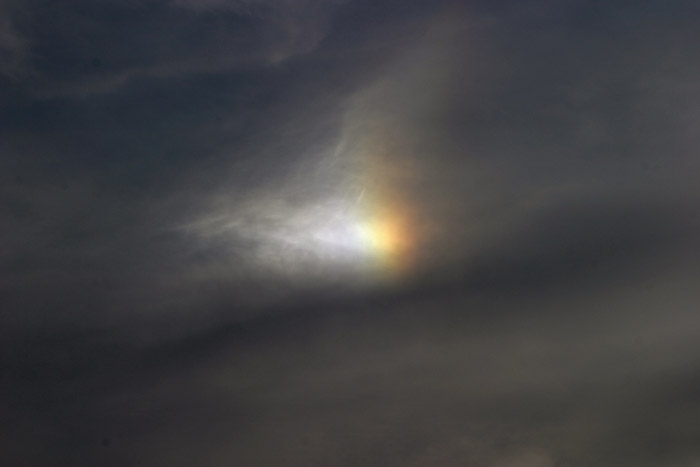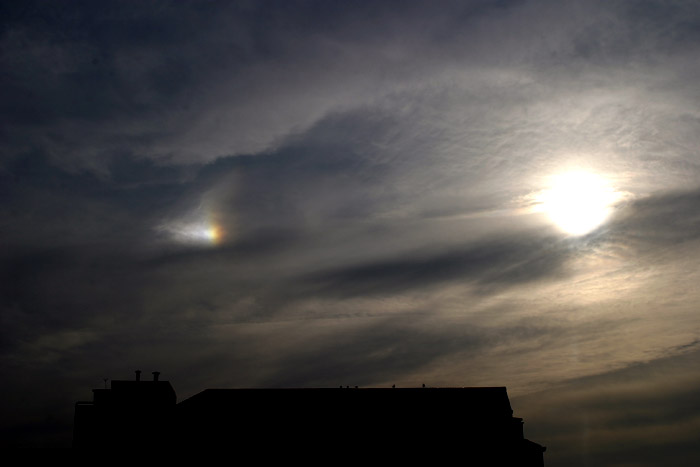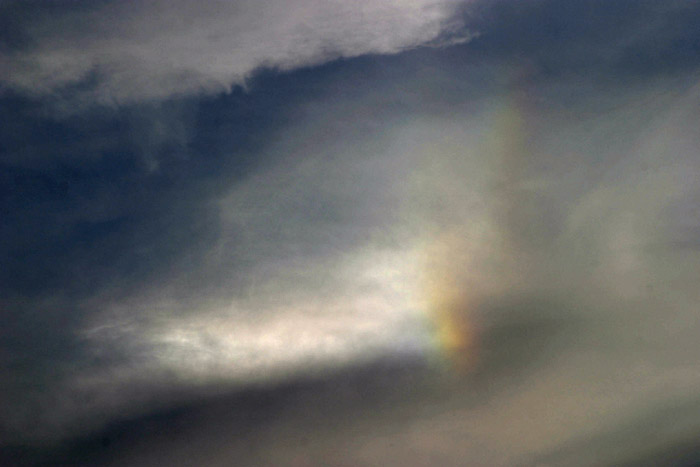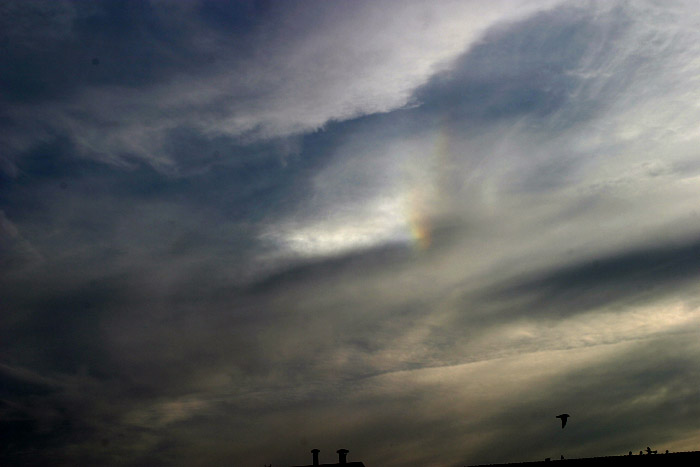Possible Lowitz arc in Ghent, Belgium, March 3rd, 2004
E - There were several left and right parhelia that afternoon. There was a band of diverse and sometimes uncommon cirrus formations, travelling gently from SE to NW. As it passed, the parhelia went brighter and fainter all the time, and I took some pictures now and then, mostly when they were at their brightest. A very faint parhelic arc showed up for an instant too.
At a moment, I saw what seemed to be a faint 'second' upward tail from the left sundog. I didn't realise at the moment what it was and took little notice of it, but I took some pictures anyway. It was not until I looked again at the photos that evening that I realised that this second faint arc might be a rare Lowitz arc. For a moment, I also thought it was a reflection in the window glass (there's also a stripe of reflections under the sun in the second picture), but it isn't. The same arc shows up on a different pictures that were taken from different windows, at different distances from the glass, and at different brightness level of the sundog. The brightness of the possible Lowitz arc doesn't correspond to the brightness of the sundog, so I don't think any reflections are involved here.
Coordinates of Ghent: 51.03 north, 03.43 east. Pictures were taken between 16:03:26 and 16:04:57 Brussels GMT+01:00 Time.
I calculated sun height for my location at 16:04:00 GMT+1 at this page http://www.ga.gov.au/nmd/geodesy/astro/smpos.jsp
| Ghent Lat= +51°03'00" Long= +3°43'00" Height=0.0m (actual height: less then 20m above sea level) | ||||
| AZIMUTH AND ALTITUDE OF THE SUN Time zone: +1.00 hours Altitude includes astronomical refraction angle for a standard atmosphere. | ||||
| Date | Time | Refraction | Azimuth | Altitude |
| 03/03/2004 | 16:04:00 | 00°02'41" | 230°17'49" | 19°53'08" |
| Computed using National Mapping Division's sunmoonposn program, version 1.1 | ||||
This figure is a scan from Robert Greenlers book "Rainbows, Halos, and Glories" ISBN 0521 38865 1 Paperback p.46.
If you look at the sim for 20° sun elevation, you will see two faint arcs pointing outward and up from the point where the 22° halo and sundog meet.
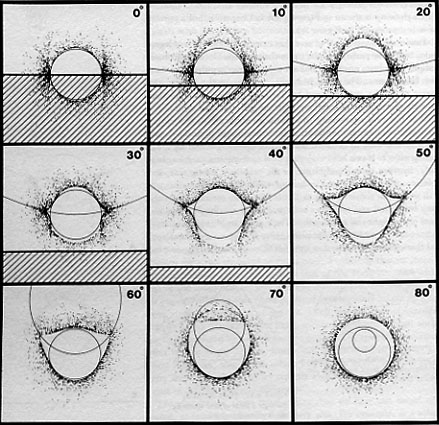 |
I got this reply from Les Cowley (Atmospheric Optics) about this page:
"Peter,
I have been away on vacation.
I cannot be sure that your arcs are Lowitz. It is possible however. To
be more certain it would be necessary to see the lower Lowitz arcs and also more of the top sections of the upper arcs.
I've attached a HaloSim simulation for a 20º sun. The fainter Lowitz
arcs in the direction away from the sun only show up at this solar altitude when the plate crystals are quite thick. In the simulation I used a c/a ratio (thickness to width) of 0.8 compared with a more normal 0.2
I have attached the simulation parameters file and if you download HaloSim you can run it and your own variations.
I think that Lowitz arcs are not quite as rare as the earlier books supposed. I've seen several Lowitz images over the last year - now that more and more people have digital cameras the rare halos are getting seen more frequently. Having said that, Lowitz arcs always seem to be elusive in the sense that is difficult to say with certainty that they are there.
I hope some of this helps!
Thanks for writing
Les"
Attachments:
posslow.sim (opens in IE - Download as posslow.zip)
(Dowload HaloSim executable from Atmospheric Optics)

The four pictures on top are as taken, but resized to fit webresolution. The ones underneath are the same but strongly enhanced to show features better.
T - Technical
- Camera: Canon Eos 10D
- Lenses: Canon EF 28-105mm 1:3.5-4.5
- Settings per picture can be found in exif headers of each image
Heavily enhanced versions:
